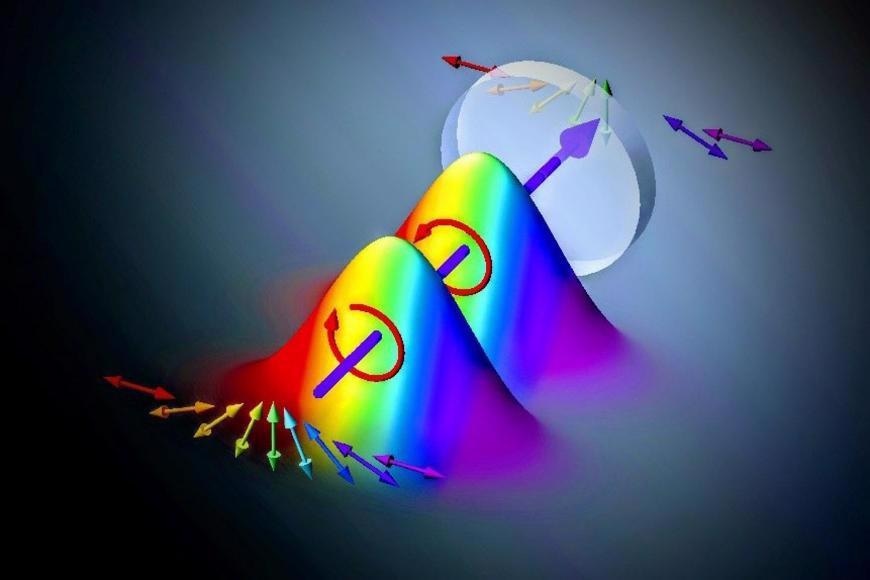Jun 22 2021
Scientists from Tampere University along with their collaborators have demonstrated a new method to increase the speed of spectroscopic measurements.
 Conceptual image of the method of using spectrally varying polarization states for high-speed spectroscopic measurements. Image Credit: Frédéric Bouchard / National Research Council of Canada.
Conceptual image of the method of using spectrally varying polarization states for high-speed spectroscopic measurements. Image Credit: Frédéric Bouchard / National Research Council of Canada.
The researchers can correlate the polarization to the color of a pulsed laser and can thus track the changes in the light spectrum through simple and very fast polarization measurements. This latest method offers new possibilities to quantify spectral changes on a nanosecond time scale across the whole color spectrum of light. Generally in spectroscopy, the variation in the wavelength, i.e. the color, of a probe light is quantified after an interaction with a specimen. Analyzing such changes is crucial to gaing a better understanding of materials properties at the atomic level. These changes have wide applications in material studies, astronomical observations and fundamental investigation of molecules and atoms, and much more.
The researchers have now revealed a novel spectroscopic technique that could speed up measurements to read-out rates that are not possible with traditional schemes. The results of the study have been published in the Optica journal.
Spectroscopic measurements generally tend to separate the different color components to different positions, which a detector array similar to a camera chip can then read out the spectrum. Although this method allows direct observation of the spectrum, its speed is rather slow because of the large read-out array. However, the new method implemented by the researchers overcomes this limitation by producing a more complex state of laser light and thus enabling a faster measurements scheme.
Our work shows a simple way to have different polarizations for all colour components of the laser. By using this light as a probe, we can simply measure the polarization to gain information about changes in the colour spectrum.
Lea Kopf, Study Lead Author and Doctoral Researcher, Tampere University
The researchers performed a modulation in the temporal domain by coherently dividing a femtosecond pulse of a laser into two portions — each having a different polarization that is somewhat delayed with respect to each other.
Such a modulation can easily be done using a birefringence crystal, where differently polarized light travels at different speeds. This leads to the spectrally-changing polarization required for our method.
Robert Fickler, Associate Professor, Tampere University
Fickler also heads the Experimental Quantum Optics group in which the experiment was carried out.
High-Speed Spectroscopy Measurements Open New Possibilities
Apart from demonstrating how these complex states of light can be produced in laboratory settings, the team also tested their application in rebuilding spectral variations by using only polarization analysis. Since the latter needs up to four concurrent intensity measurements, just a few extremely fast photodiodes can be utilized.
This method enables scientists to determine the effect of narrowband modulations of the spectrum at an accuracy similar to traditional spectrometers, but at high speed.
“However, we couldn’t push our measurement scheme to its limits in terms of possible read-out rates, as we are limited by the speed of our modulation scheme to a few million samples per second,” added Kopf.
Based on these promising initial results, future studies will be performed where the concept will be applied to more broadband light, like the super continuum light sources, and the idea will also be applied to spectroscopy measurements of naturally fast varying samples to tap its full potential.
We are happy that our fundamental interest in structuring light in different ways has now found a new direction, which seems to be helpful for spectroscopy tasks which are usually not our focus. As a quantum optics group, we have already started discussing how to apply and benefit from these ideas in our quantum photonics experiments.
Robert Fickler, Associate Professor, Tampere University
Journal Reference:
Komf, L., et al. (2021) Spectral vector beams for high-speed spectroscopic measurements. Optica. doi.org/10.1364/OPTICA.424960.